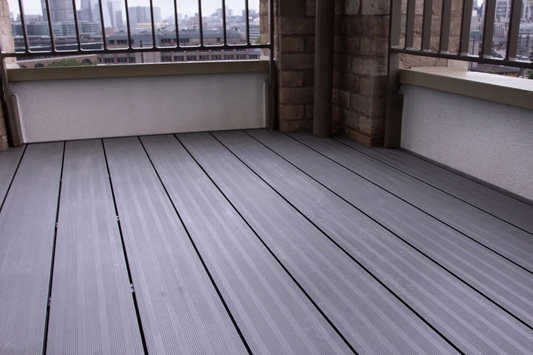
EnviroBuild’s Life Cycle Assessment: Researching the Environmental Impact of Our Products
EnviroBuild was created with an ongoing commitment to sustainability. We have made it our mission to remove the compromise between quality and sustainability and we strongly believe in improving the world of construction. This assessment will help us identify ways in which we can improve, grow and work toward this mission.
What is a Life Cycle Assessment?
A Life Cycle Assessment attempts to answer the question: What is the total impact a product will make upon the environment across its lifetime? This is exactly what EnviroBuild is currently researching in order to assess our own products. A Life Cycle Assessment is a technique which will allow us to gain a better idea of the environmental impact through every stage of a product’s life. This includes everything from gathering the raw materials, manufacturing, transportation, product use and even methods of disposal.

What is measured in a Life Cycle Assessment?
Many different environmental impact factors can be studied in Life Cycle Assessments; however, we've chosen the following key metrics. These metrics were chosen as they align with the same regulations as our upcoming Environmental Product Declarations (documents showing the environmental performance or impact of a product over its lifetime). The Life Cycle Assessment looks at these metrics and calculates how much the product contributes to each.
Climate Change
This group of metrics focus on carbon emissions from various sources. Fossil fuels are considered, with carbon emissions from non-renewable sources such as oil and natural gases being calculated. Biogenic climate change is also considered, looking at any carbon emissions into the air that originated from plant or animal material. Finally, even land use and land use change are accounted for, which looks into carbon emissions originating from transforming an area from one land use type to another.
Ozone Depletion
This is the gradual thinning of the Earth’s ozone layer in the atmosphere by chemical compounds released from industry and human activities. This increases the amount of UV radiation which is able to reach the Earth’s surface.
Acidification
Acidification is where air pollutants are converted into acids, causing acid rain. Rain that has been affected in this way will have a higher pH, affecting plants and soils which in turn damages local ecosystems.
Eutrophication
This is where nutrients from product waste seep into water bodies, exponentially increasing the growth of plants and algae. These plants and algae deplete oxygen in the water, damaging local marine and plant life. The lack of oxygen kills plants, fish and other animals and causes the water to become putrid.
Depleting Minerals and Metals
This metric looks at whether the product is depleting non-renewable resources like rare metals, minerals, clay and peat and whether or not mining is damaging local ecosystems.
Depleting Fossil Fuels
Similar to the previous metric, however this focuses on other non-renewable resources such as fossil fuels (oils and natural gases).
Water Use
This metric identifies the quantity of water use and changes in water quality. Removing too much water results in reduced water for drinking, washing, and farming.
How Does This all Come Together?
By using all of these metrics (rather than just looking at CO₂ emissions), we can get a much better picture of the real environmental impact of our products. A Life-Cycle Assessment works by looking into these metrics at every stage of a product’s lifecycle, assessing the environmental impact everywhere between gathering the raw materials and the eventual disposal of the product. This will allow us to be more transparent about the actual eco-credentials of our products, while providing a better idea overall as to ways we can improve these credentials at every stage.
EnviroBuild's Life Cycle Assessment
In 2021 EnviroBuild began our Life Cycle Assessment project. The question we’ve been asking ourselves is how sustainable exactly are our products and how can we improve? We looked at the entire product lifespan of particular ranges and did all the calculations necessary to find out. We completed LCA's for all our Hyperion Composites, Sisu Luxury Vinyl Tiles and Aluminium products.
We believe in continual improvement and innovation, which is why we’ve not only launched our Life Cycle Assessments, but acted on the weak points we discovered. 2021 was therefore the year EnviroBuild made a massive push toward wind energy manufacturing. Allowing us to significantly reduce the environmental impact of our Sisu Indoor Flooring, Hyperion Composites and Manticore products.

For more information, read our full collection of product LCA's and EPD's. To find out more about the steps we take to become a more sustainable company see our Impact Report.


